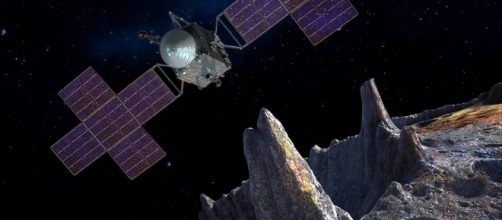NASA has set a new launch window for its mission, Psyche, now for summer of 2022, with an arrival date estimate of 2026. Once at its destination, the Probe will study an asteroid that shares the mission's name. Psyche is an asteroid with a composition mostly of nickel-iron metal and orbits the Sun between Mars and Jupiter. The change did not come randomly, as the new date will give a better trajectory to the asteroid and reduce the overall cost of the mission. The improvements will also cut travel times, allowing the Probe to get there twice as fast by not relying on Earth's gravitational help.
Although, it is interesting to note that the Probe will still use Mars own gravitational force to propel it forward in its trajectory.
Details on the Mission
The mission is part of the Discovery Program, one that focuses on sending smaller more cost-effective robotic probes for space exploration, while facilitating a much faster acquisition of knowledge of the Solar System. Another design feature of the program, now seen on the Psyche Probe is the combination of smaller spacecraft with larger high-power solar array systems to allow faster travel times.
Space Systems Loral (SSL) in Palo Alto, California is the team in charge of building the spacecraft. The designers have worked non-stop to reach the newly scheduled launch window.
The team has also innovated and redesigned the solar array system, that is, the solar panels that power the Probe, from a standard rectangular design to a much stronger five-panel X design. The change will help give the Probe improved movement and support higher velocity.
Importance of Psyche
The mission will determine if Psyche could be the core of an Early Planet; a likely possibility considering its composition, one that resembles those of terrestrial planets (e.g. Earth and Mars). With this in mind, the endeavor has the potential to offer a unique look into the violent collisions that created the terrestrial planets by understanding the basic building blocks and events that allowed planets such as Earth to appear in the Universe.
To do so, the mission team, with help from the Probe will calculate the age, topography, core composition(solid or melted) and if the asteroid formed in more oxidized or reduced atmospheric conditions. The instrument payload that will give these insights includes magnetometers, multi-spectral cameras, and a gamma ray and neutron spectrometer. In a romantic side note, the mission is also an opportunity to experience an unexplored world and further knowledge for future asteroid mining possibilities. Asteroid mining is a promising future activity, one that China has its eyes on and will have economic implications for our society as well.


